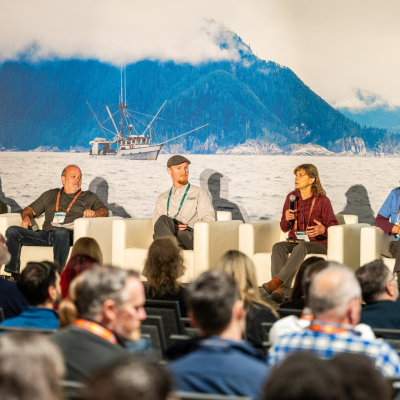Crabbers will help test the waters for tanner crabs next month in Alaska's Prince William Sound.
Opening under a commissioner’s permit, this will be the first time since 1988 that commercial crab pots are dropped in western and eastern portions of outside waters.
“Basically, it’s a fact-finding mission,” said Jan Rumble, area management biologist for Prince William Sound and Cook Inlet at the Alaska Department of Fish and Game office in Homer. “We don’t know what is out there, and we want to find out. What we do know is there was a small amount of crab in the western district, but we are encouraging people to go and explore."
The trial opener was prompted by increasing numbers of tanner crabs being pulled up in subsistence pots and the fact that the department’s trawl survey does not focus on those two districts.
“The survey last summer produced poor legal male results but some good numbers of pre-recruits. Much of the western area can’t be accessed with trawl gear, and crabbers can help us investigate further,” Rumble added.
The fishery, which will open March 1 and could run through the month, will be small scale. It is anyone’s guess how much crab it will produce.
“There is no guideline harvest level. This is a fact-finding mission,” Rumble emphasized.
Crabbers must get a permit from the Commercial Fisheries Entry Commission and will be required to call in catches daily. The fishery also is super-exclusive, meaning it is off limits to those who have dropped pots for Tanners elsewhere, such as in Kodiak’s recent fishery.
“People in Kodiak who are vessel operators and their vessels cannot jump over and participate in Prince William Sound,” said Rumble.
Crabbers also must show that they have a market for their catch. Trident is planning to process the crab out of Cordova.
Decades ago, the Prince William Sound, Cook Inlet and Yakutat regions kept local processors busy all year with big catches of tanners, king and Dungeness crab. But stocks plummeted with the arrivals of huge schools of cod and pollock and have been slow to recover, if at all.
The tanner trial gives a glimmer of hope, but Rumble said people should not have unrealistic expectations.
“This is exploratory, and we are optimistic that we can get some information, but we also are encouraging people to understand why we are doing this and what we are after,” she said, adding that the results of the Tanner test fishery will determine what happens next.
Contact Fish and Game in Homer to sign on or learn more at (907) 235-8191.







